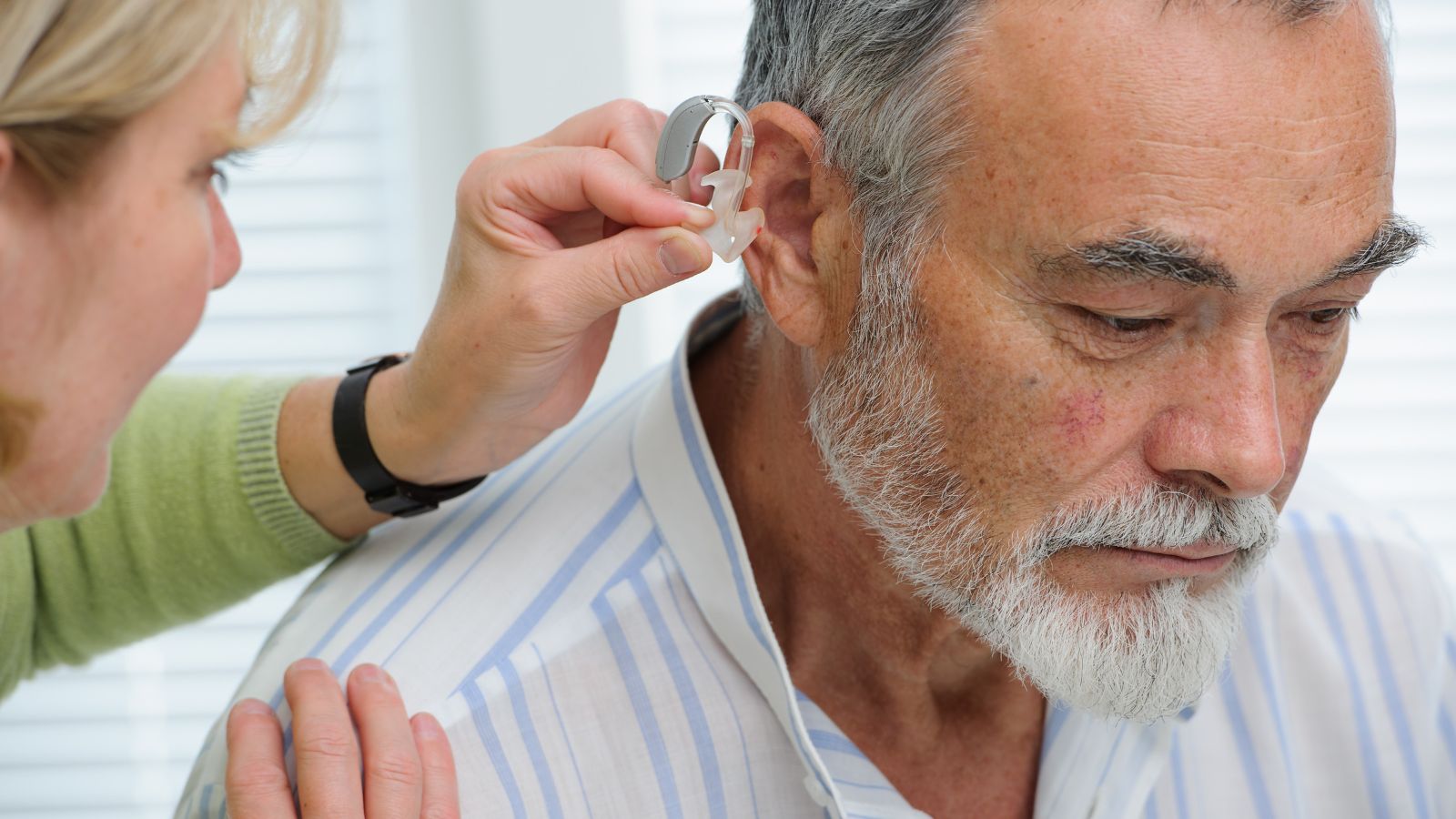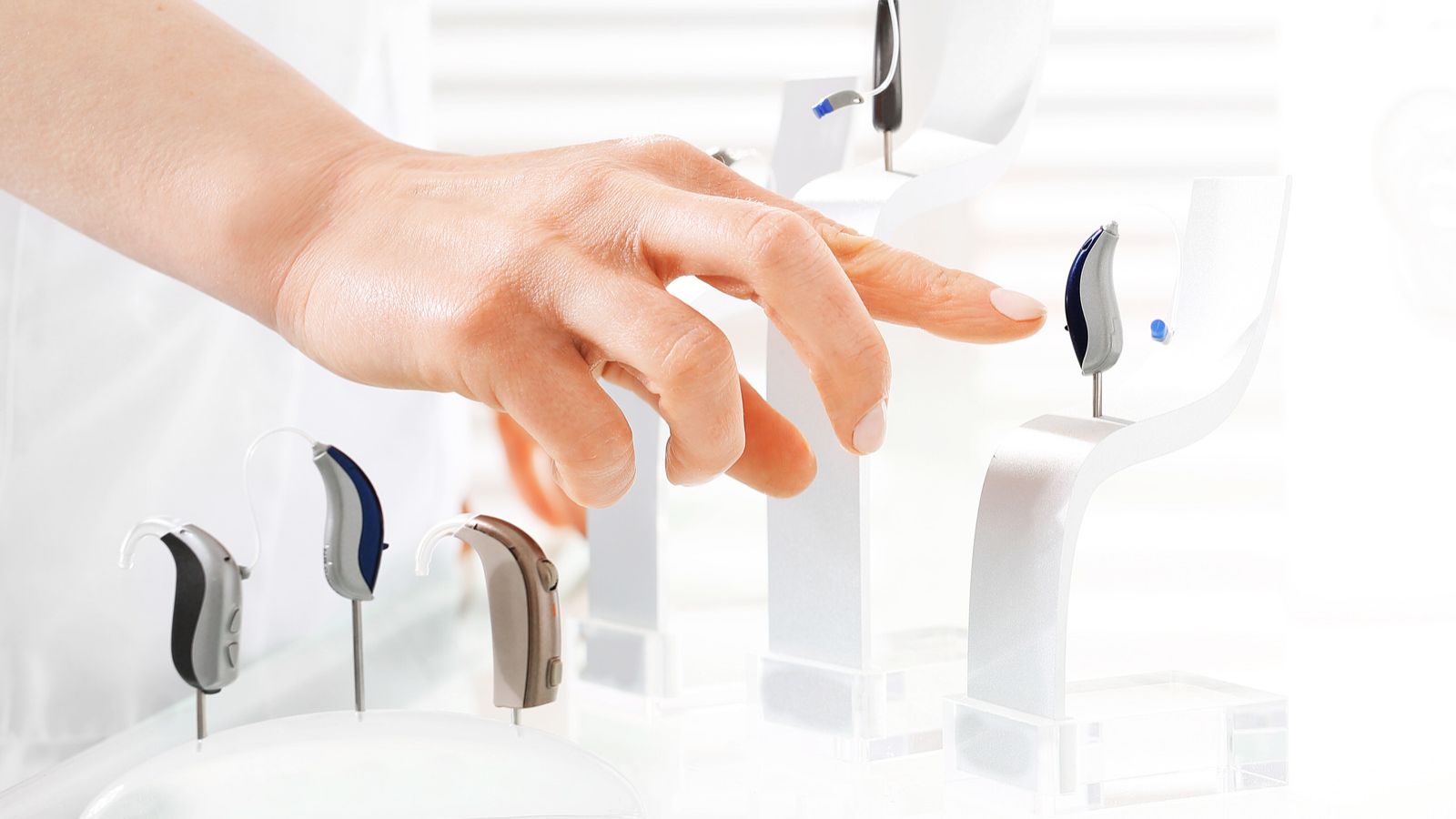Join The Nantwich Clinic Club to keep up to date with news and offers!
Sign Up
For the approximately 16% of the population who struggle with hearing loss, a hearing aid can be one of the best options to aid in treating it and helping to restore quality of life once again, but just how do they work? To start figuring that out, the best place to start is by explaining exactly what a hearing aid is, and exploring what they are capable of doing.
A hearing aid is a small electronic device that is used to help those who are struggling with hearing loss, which can be highly customisable in order to address many different forms and causes of hearing loss. Modern hearing aids all contain at least one microphone which picks up the sound coming into the ear, a computer chip which is used to process and amplify the relevant sound, and finally a small speaker which sends the signal into the ear so that it can be deciphered and understood by the brain, all powered by a small battery to keep it running.
Just like your fingerprint, every ear is unique and finding the right hearing aid is important to make sure that they can actually help your hearing. It’s not just the shape of the ear that makes it important to find the right fit, but also the specific pattern of hearing loss that is being experienced.
Once it becomes clear that you need a hearing aid, you will need to be fitted for one and a number of factors need to be taken into account during this process. The best fit for your ear is not just finding the best physical fit, but also comes down to the severity of your hearing loss and even stretching as far as understanding your exact budget, cosmetic preferences (like colour and size) and even the demands of your career (as a noisier environment will require a different configuration than a quieter setting).
Even if we had two people with the exact same degree and severity of hearing loss, they will likely end up with completely different hearing aids based on their own requirements. Hearing aids are individual to the person who needs them, and for this reason alone we offer a completely free 2 week trial of all hearing aids that we supply so that you can find the perfect fit for you. It’s no good trying to fit a square peg into a round hole, you need to find the one that is just right to be able to feel the benefits.
Once you have found the perfect hearing aid for you, its then just a case of adapting to your new hearing aid and reaping the benefits that it will provide.

Working like a sliding scale, the better the hearing aid you have, the better the sound becomes and the more natural the experience will become. Depending on the exact device that you choose, there are features that can be used to improve the quality of the sound like noise management and automatic volume regulation (which aid in making sure you can hear whether you’re in a busy environment like a coffee shop or relaxing at home with family).
The problem with hearing loss is that it stops you being able to hear sounds that are below a specific volume, so just amplifying the sound of everything by the same degree would cause some sounds to become truly unbearable. Thankfully, modern hearing aids come with the ability to analyse the sounds that they are interpreting, filter out what isn’t needed and boost or amplify the relevant sounds. All of this is determined by the way that the hearing aid is programmed (and this is all based on your ear and your hearing loss), which can be tweaked and developed as time passes.

While your hearing aids may take some time to get used to, they will provide a fairly instant boost to your hearing ability. The initial fitting will help to fine tune everything to match your exact needs, adjusting the levels so that you are able to notice an improvement.
As you adapt to your hearing aid and grow more comfortable with it, you’ll continue to notice the improvements, but it’s important to bear in mind that your hearing won’t technically get “better”, a hearing aid just helps to provide more clarity.

When they were first invented, hearing aids were a form of ear trumpet, made out of wood or metal, and were used to funnel the sound directly into the ear. With the invention of the telephone and microphones in the late 1800’s, electronic hearing aids started to be developed and began to grow in popularity (even being worn by Queen Alexandra in the early 1900’s). The problem with this though is that they needed a sound receiver (which was a large box) and a speaker that connected into the ear to be able to hear properly.
Since that point, they have been developed further to become much smaller and more portable to become the behind the ear hearing aids that we still see today, which first started to be used in the late 1980’s, and even further into the inside the ear hearing aids that are becoming increasingly popular.
To find out more about the hearing aids that we are able to provide, or to book a consultation with our audiologist to discuss your hearing loss, the best thing that you can do is contact The Nantwich Clinic today. Taking the first steps to being able to hear clearly again is simple, and we’re here to help!
Whether it’s a quick question that you need to ask, or you would like to book an appointment with us, we want to hear from you. Simply click the button below to get started or contact us on 01270 627118.
